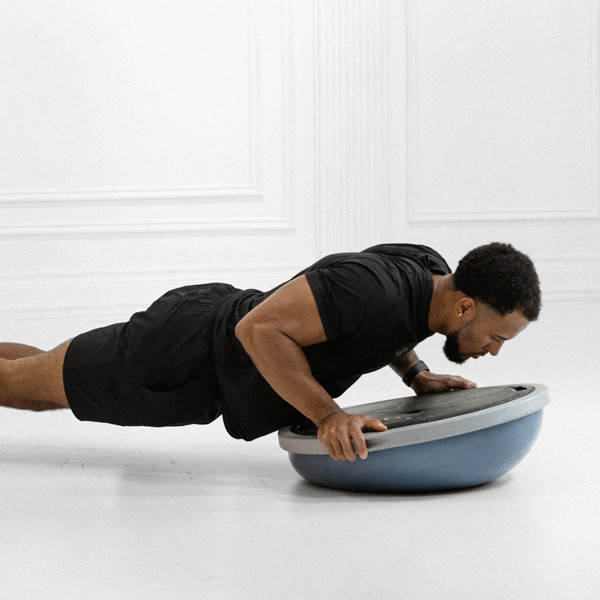Stability Ball V-Up
A core exercise using a stability ball where you lift your torso and legs to form a V and pass the ball between hands and feet, targeting abs and obliques for strength, stability, and coordination.
About Exercise
Equipment
Stability Ball
Difficulty
4/5 • Intermediate
Primary Muscle Groups
Abs, Obliques
Secondary Muscles
Adductors, Glutes
Popularity Score
6
Goals
Training Style
Setup Requirements
Requires Rack
No
Requires Bench
No
Requires Spotter
No
Space Needed
Small
Noise Level
Low
Muscle Breakdown
View Muscle MapAbs
10/10Rectus Abdominis
Obliques
8/10External Obliques, Internal Obliques
Hip Flexors
6/10Iliopsoas
Adductors
4/10Adductor Longus
Glutes
3/10Glute Max
Programming
Typical Rep Range
8-20 reps
Rest Between Sets
30-60 seconds
How to Perform
Lie supine on a mat with legs extended and arms overhead holding the stability ball.
- Engage core and lift torso while reaching arms forward.
- Simultaneously raise straight legs toward torso to form a V.
- At the top, transfer ball from hands to feet by squeezing between ankles.
- Controlled lower torso and arms back to start, keeping them off the floor.
- Lower legs with ball, maintaining tension.
- Repeat by lifting to transfer ball back to hands.
Coaching Tips
Form Cues
- Keep legs straight
- Core tight throughout
- Control the ball transfer
- Avoid back rounding
Breathing
Inhale during lowering phase; exhale forcefully as you lift and transfer the ball.
Tempo
2-1-2
Range of Motion
Lift until torso and legs form a 45-60 degree V with hands and feet meeting; lower to 6 inches above floor without arching back.
Safety
Safety Notes
- Avoid if acute lower back pain
- Use proper ball size for height
- Engage core to protect spine
- Start with bent knees if beginner
Spotting
No spotter needed; perform in open space to avoid falls.
Common Mistakes
- Jerking movements
- Lower back arching
- Incomplete V formation
- Dropping the ball prematurely
When to Avoid
- Lower back injuries
- Herniated discs
Flexibility Needed
- Adequate hip flexion
- Shoulder flexion to overhead
Build Up First
- Master standard V-up
- Core stability proficiency
Also known as
Stability Ball V-Pass, Ball V-Up, Swiss Ball V-Up
Found this helpful?
Share your thoughts or help us improve this guide.
Similar Exercises

Stability Ball Push-Up
Stability Ball
Chest, Abs

Stability Ball Pike
Stability Ball
Abs, Obliques

Stability Ball Jackknife Sit-Up
Stability Ball
Abs, Obliques

Stability Ball Plank
Stability Ball
Abs, Obliques

Weighted Sit-Up on Stability Ball
Dumbbells, Stability Ball
Abs

Stability Ball Crunch
Stability Ball
Abs

Stability Ball Pull In
Stability Ball
Abs, Obliques

Stability Ball Deadbug
Stability Ball
Abs

Stability Ball Rollout
Stability Ball
Abs, Obliques

Stability Ball Half Moon
Stability Ball
Obliques, Lats


subscribe to our newsletter
Contact Us
hello@trainfitness.aiFind Us
130 Spadina Avenue, Toronto,
Ontario, M5V 0H4, Canada
©2025 All Rights Reserved
